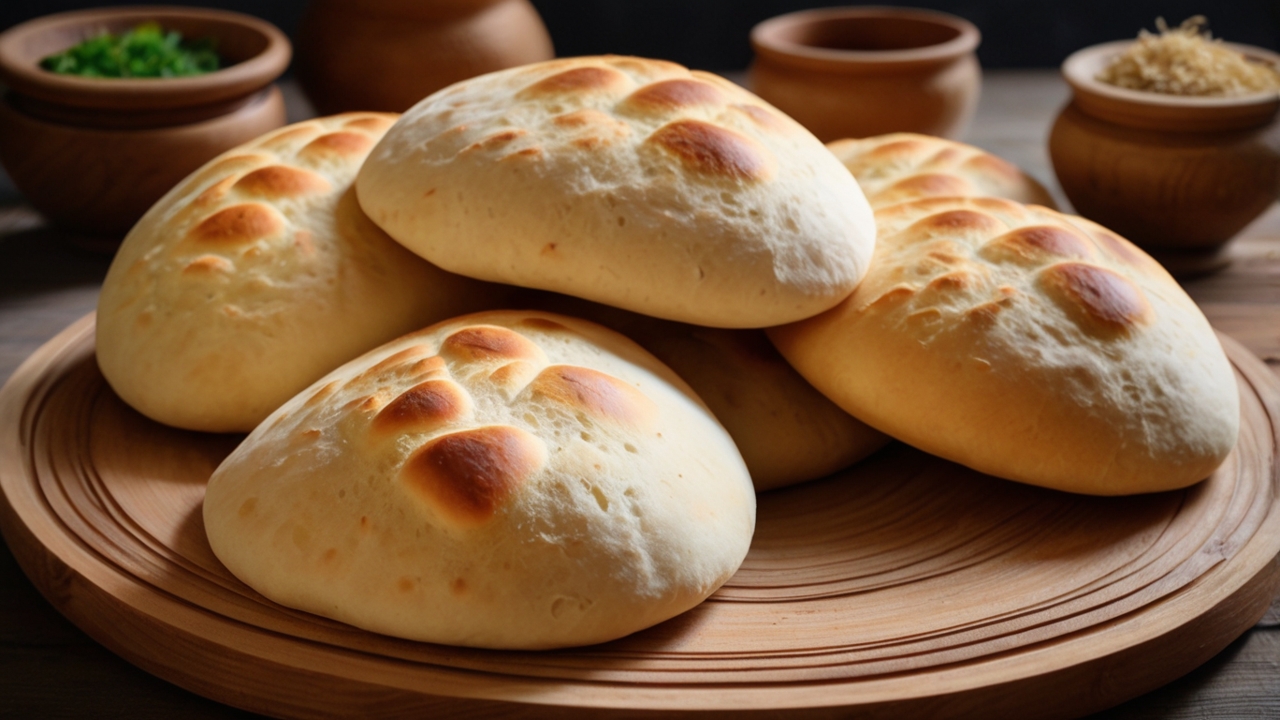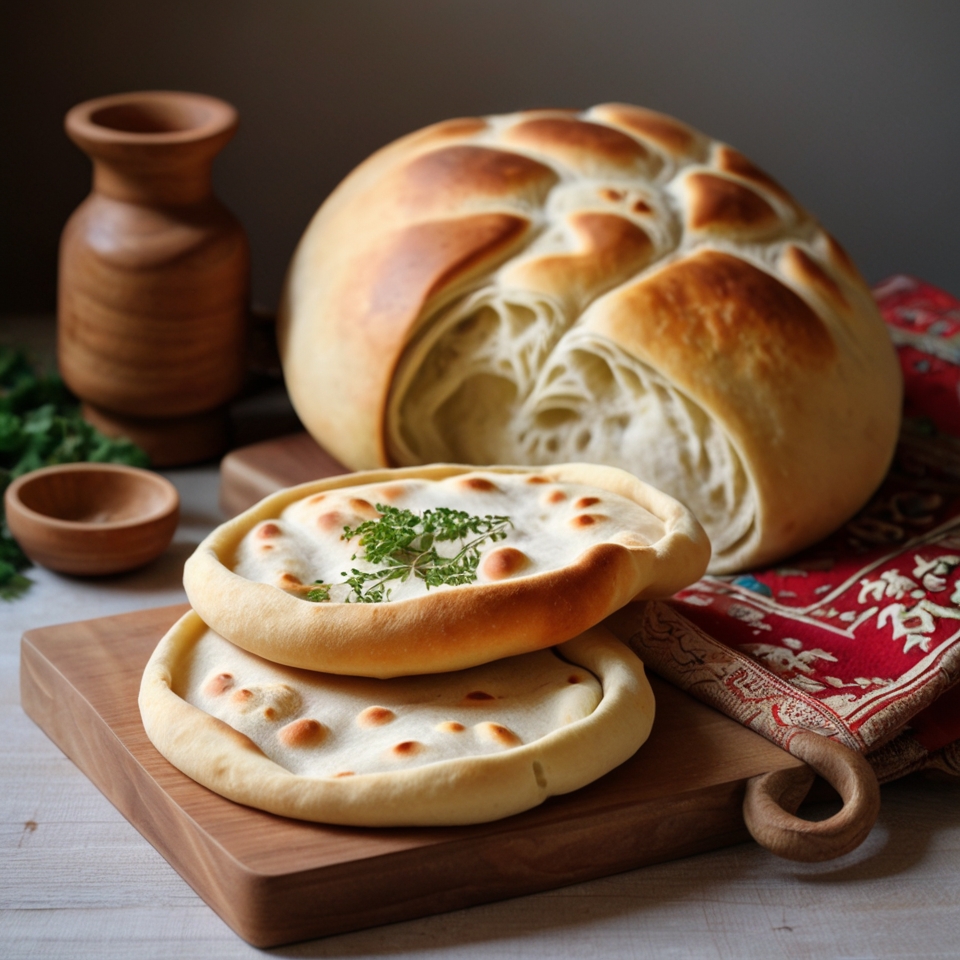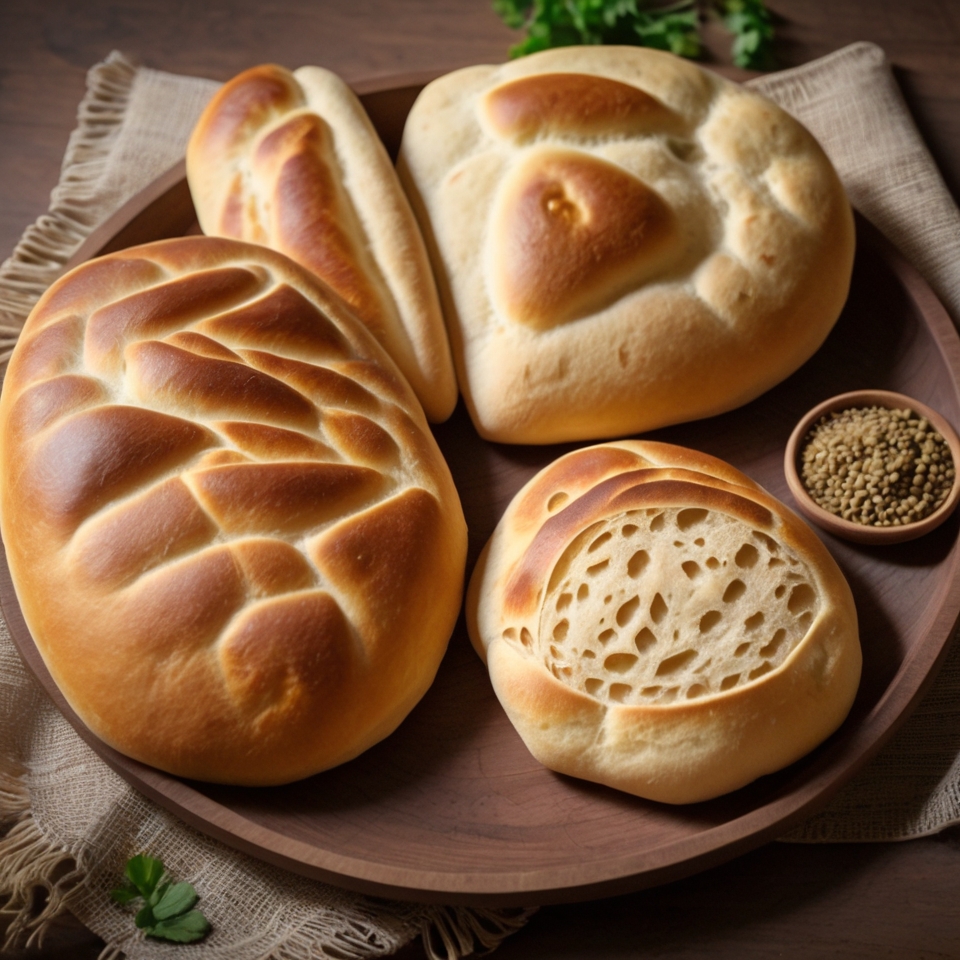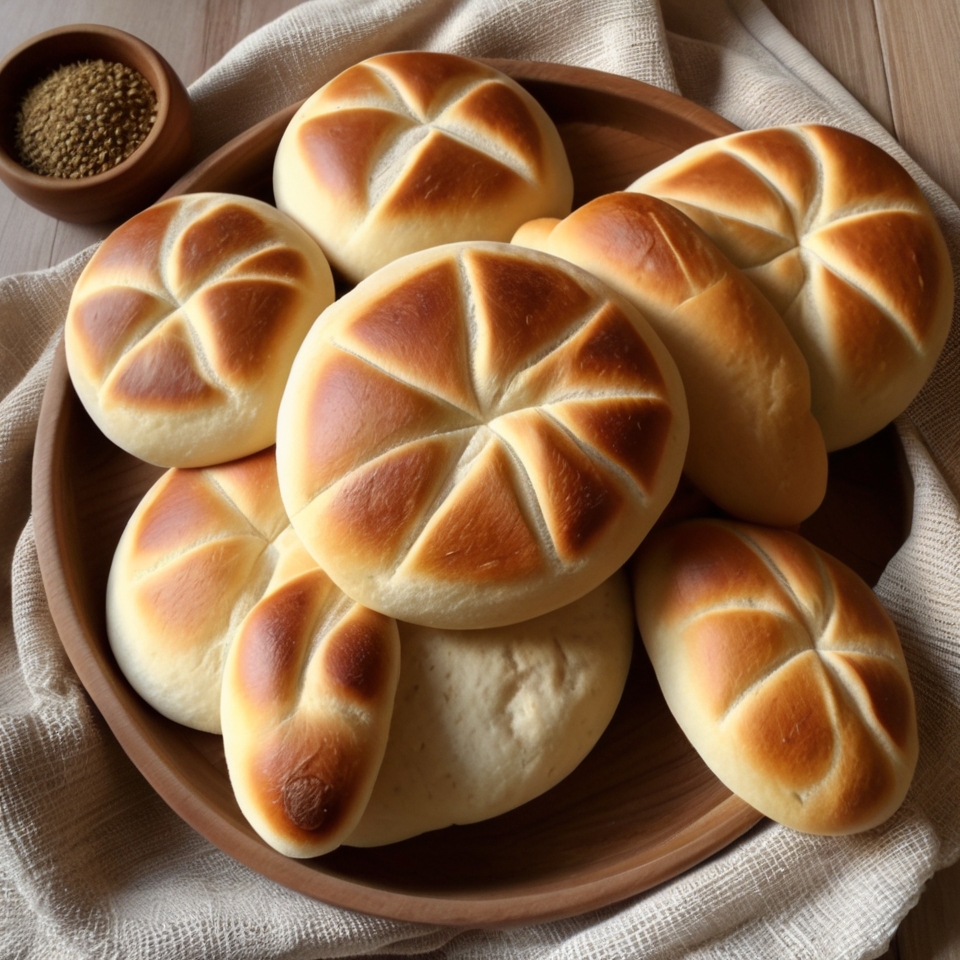
Uzbek Lepyoshka Bread, The Timeless Story of a Traditional Flatbread Recipe
Biobaeckerei – There’s something magical about Uzbek Lepyoshka Bread a golden, round flatbread that carries the warmth of home in every bite. Originating from Uzbekistan, this bread is more than food; it’s a cultural symbol. It graces every table, from simple family meals to grand celebrations. Its crisp exterior, soft interior, and fragrant aroma represent the spirit of Central Asian hospitality: generous, humble, and heartwarming.
“Read also: Delicious Yet Nutritious: Diet Meals That Don’t Taste Like Cardboard“
A Glimpse into Its Cultural Heritage
In Uzbekistan, Lepyoshka also known as non is baked in a traditional clay oven called a tandoor. The process is almost ceremonial. Each region adds its own flair: some use yogurt for tenderness, others use sesame or nigella seeds for aroma. But beyond its variations, one thing remains constant the bread’s round shape symbolizing unity and eternity, a reflection of life’s continuous cycle in Uzbek culture.



The Ingredients
- 500 g high-protein bread flour (you can mix with a little all-purpose flour)
- 1 tsp salt
- 1 tsp sugar
- 7 g instant yeast
- 250 ml warm water
- 2 tbsp vegetable oil or melted butter
- 2 tbsp plain yogurt (optional, for extra softness)
- 1 egg yolk (for brushing)
- 1 tbsp milk (for brushing)
- Topping: sesame seeds or nigella seeds (black cumin)
Instructions:
1. Activate the Yeast
Mix yeast, sugar, and a little warm water in a small bowl. Stir gently and let it sit for about 10 minutes until foamy. If it doesn’t foam, the yeast is inactive use a new one.
2. Make the Dough
In a large mixing bowl, combine flour and salt. Make a well in the center, add the activated yeast mixture, warm water, oil, and yogurt. Knead until smooth and elastic (about 10–12 minutes). If it’s too sticky, sprinkle in a bit more flour.
3. First Proofing
Cover the dough with a damp cloth or plastic wrap and let it rest in a warm place for 1 hour, or until it doubles in size.
4. Shape the Bread
Punch down the dough to release air. Divide into 2–3 equal parts. Shape each piece into a ball, then flatten into a round disc about 18–20 cm in diameter.
Use your fingers or a chekich (traditional Uzbek bread stamp; you can use a fork as a substitute) to press the center so it doesn’t rise too much during baking.
5. Glaze and Topping
Mix egg yolk and milk, then brush over the surface. Sprinkle sesame or nigella seeds around the edges.
6. Second Proofing
Let the shaped dough rest again for 15–20 minutes to relax before baking.
7. Baking
Preheat your oven to 220°C (425°F). Bake for 15–20 minutes or until golden brown.
For an authentic tandoor-like aroma, spray a little water on the oven walls before baking the steam will create a crisp crust and a soft interior.
The Traditional Baking Ritual
Traditionally, the dough is pressed in the center with a wooden stamp called chekich, leaving a beautiful pattern that keeps the middle thin. The bread is then slapped onto the hot walls of a tandoor, where it bakes in mere minutes, forming a smoky crust and a soft, fragrant heart. The sound of crackling dough and the smell of warm bread fill Uzbek homes, turning an ordinary day into a small celebration.
Baking Lepyoshka at Home
In modern kitchens, Uzbek Lepyoshka Bread can easily be baked in a conventional oven. While it may lack the tandoor’s earthy smokiness, the result remains delicious. Preheating the oven to 220°C (425°F) and using steam during baking helps achieve a similar crust. Some even use pizza stones or cast iron pans for better heat distribution. It’s proof that tradition can evolve without losing its soul.
Taste and Texture, The Perfect Harmony
Every bite of Lepyoshka brings contrast a crisp golden crust followed by a soft, fluffy core. Its edges are slightly chewy, while the center stays tender. When served warm, the bread releases a subtle aroma of yeast and toasted sesame, reminding one of distant lands and ancient ovens. It’s the kind of bread that invites you to tear it with your hands, share it with loved ones, and savor the simplicity of life.
Symbolism and Everyday Importance
In Uzbek culture, bread holds sacred value. Dropping it on the floor is considered disrespectful, and families never throw it away. Uzbek Lepyoshka Bread is more than nourishment; it’s a blessing. It accompanies every meal breakfast with tea, lunch with stew, or dinner with kebabs. In weddings, it symbolizes prosperity; in farewells, it represents safe returns. Each loaf carries emotions baked into its crust.
Comparing Lepyoshka to Other Flatbreads
While it shares similarities with Middle Eastern naan or Turkish pide, Lepyoshka stands apart. It’s less oily than naan, denser than pita, and uniquely decorative. The traditional chekich patterns aren’t just aesthetic they serve a practical purpose by preventing the dough from puffing too much. In a way, Lepyoshka blends artistry and functionality, making it one of the most distinctive flatbreads in the world.
The Emotion Behind the Dough
What makes Uzbek Lepyoshka Bread unforgettable isn’t just its taste it’s the story behind it. Watching an Uzbek grandmother knead the dough, press the pattern, and gently place it into the tandoor is like witnessing poetry. You can feel her love in every motion. When the bread is served, it’s never alone; it comes with laughter, conversation, and togetherness. That’s the soul of Lepyoshka it connects people.
“Read also: Inside China’s Kitchens: The Real Story Behind Kung Pao Chicken“
Health Benefits and Nutritional Insights
Beyond tradition, Lepyoshka offers practical benefits. Made from simple, whole ingredients without preservatives, it’s a clean carbohydrate source. Using yogurt adds probiotics, aiding digestion. When paired with lentil soup or fresh vegetables, it becomes a balanced meal. Moderation is key, of course, but this bread’s nutritional profile makes it a wholesome alternative to processed bakery products.
Keeping the Tradition Alive
Today, younger generations in Uzbekistan and beyond are rediscovering the joy of baking Lepyoshka Bread at home. Social media has become a bridge between the old and new worlds grandmothers share ancient recipes, while food bloggers modernize them with creative twists. The bread continues to evolve, yet its essence remains untouched: a connection to one’s roots through the warmth of the oven.
A Bread That Feeds the Soul
Uzbek Lepyoshka Bread isn’t just a recipe it’s a reminder of how food binds us to our heritage. Its humble ingredients hide deep wisdom: patience, care, and sharing. Whether baked in a tandoor or an electric oven, the aroma still carries the same message love tastes the same in every language. So next time you bake or break Lepyoshka, remember that you’re part of a centuries-old tradition that feeds not just the body, but the soul.

Leave a Reply